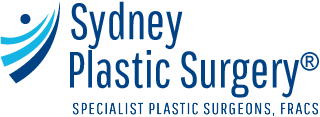Excessive Sweating, also recognised as Hyperhidrosis
Excessive sweating is sweating beyond the level needed to maintain normal body temperature in response to heat exposure or exercise. It can be classified as either primary or secondary.
Primary hyperhidrosis is idiopathic, usually involving the hands (palmar), feet (plantar), or axillae (armpits). Secondary hyperhidrosis can be an outcome of a diversity of drugs, such as tricyclic antidepressants, selective serotonin reuptake inhibitors (SSRIs), or underlying diseases/conditions, such as febrile diseases, diabetes mellitus, anxiety or menopause. Gustatory hyperhidrosis is an uncommon iatrogenic cause of facial hyperhidrosis in response to hot or spicy foods, resulting from surgery to the parotid gland and subsequent aberrant regenerating parasympathetic fibres.
Call us on free phone 1300 002 006 if you are outside Sydney or 9561 0222 if you’re in the Sydney area
The consequences of hyperhidrosis are primarily psychosocial in nature.
Plan your treatment
The Surgeon will help the patient to reach a treatment decision. The options are:
1 – miraDry:
 miraDry uses thermal energy to create heat in the area where bothersome sweat and odour glands reside and safely eliminates them. An appointment generally lasts about one hour, and most patients return to regular activity (like returning to work) immediately. Exercise is typically resumed within several days. You may experience swelling, numbness, bruising, and sensitivity in the underarm area for several days after treatment.
miraDry uses thermal energy to create heat in the area where bothersome sweat and odour glands reside and safely eliminates them. An appointment generally lasts about one hour, and most patients return to regular activity (like returning to work) immediately. Exercise is typically resumed within several days. You may experience swelling, numbness, bruising, and sensitivity in the underarm area for several days after treatment.
With miraDry, you can expect immediate and lasting results. Once the treatment eliminates the sweat and odour glands, they’re gone for good.
2 – Armpit skin resection and gland debulking. Also known as open adenectomy:
It is a surgical procedure that is often performed under local anaesthetic and sedation and involves the removal of an ellipse of skin and sweat glands from the armpit. It creates a 4cm scar in the hair-bearing skin in the axillae (armpit) and gives a long-lasting result.
3 – Injectables:
Sweat glands need a nerve impulse to activate. Without this stimulation, they won’t secrete. When injecting into problem areas such as underarms, hands and feet, the related nerve impulse is temporarily relaxed and prevented from reaching the sweat gland. This, in turn, stops sweat production in the treated area.
The treatment is as simple as it sounds. All patients report a substantial reduction in sweating within two days. Better still, many patients don’t sweat at all following treatment. Repeat treatment is generally recommended within 3-6 months.
The patient will be going home with minimal discomfort; a simple analgesic will be adequate to control the discomfort.
You can return back to work the day following surgery as long as it does not involve heavy-duty work or stretching the arms above the shoulders.
Back to full normal activities in 7 days’ time.
Do the injections hurt?
A small disposable syringe with a microneedle is used. When treating the armpits, palms, and soles, most patients discover that the injections just cause mild, temporary discomfort.
How will the area look after treatment?
Instantly after the injections, there may be mild swelling, which usually subsides within 24-48 hours.
Applying cold (i.e. an ice pack) for a few hours after treatment will help reduce swelling.
Side effects of this treatment are uncommon. The most common are minor discomfort, redness, swelling, and mild bruising, which generally last between 24 and 48 hours. However, the treatment is not recommended if you are pregnant or breastfeeding, suffer from neurologic conditions (myasthenia gravis, myopathies), or are taking medications like Ca Blockers or Quinolone Antibiotics (Ciprofloxacin, Ofloxacin, etc.).
